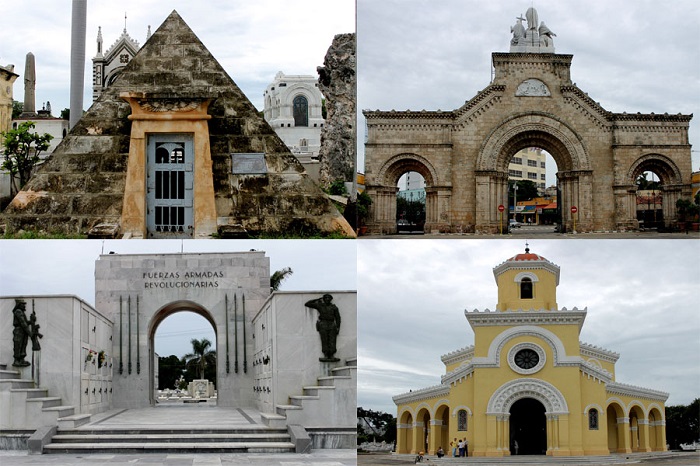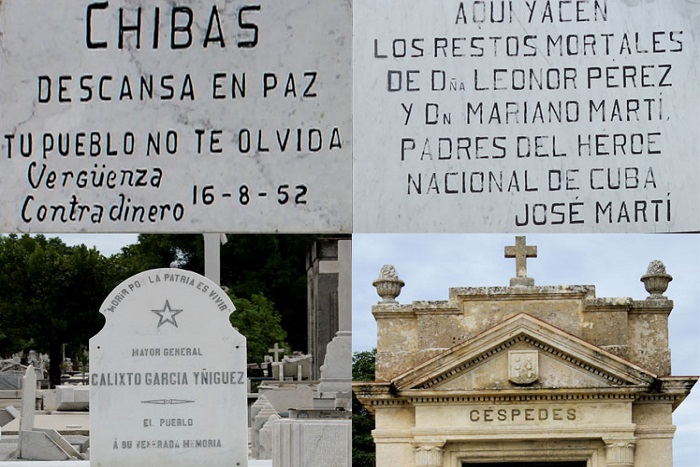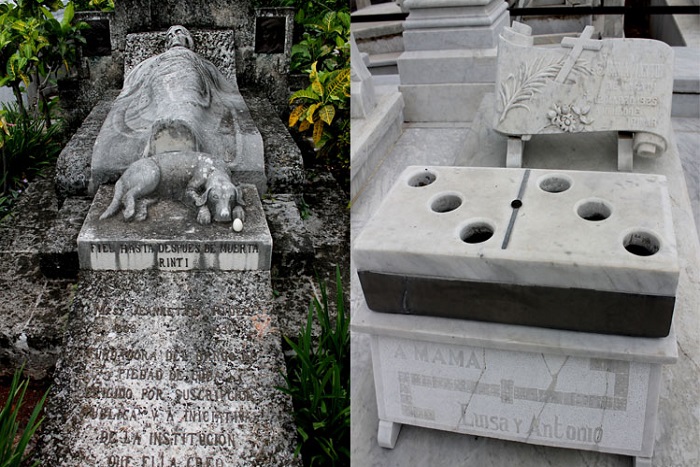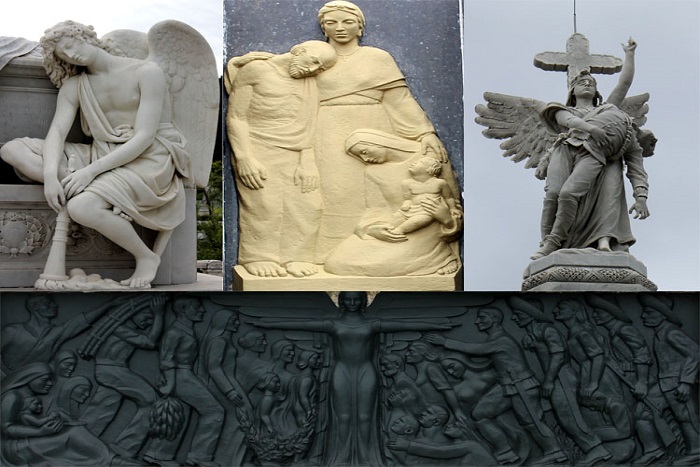In the midst of stately tombs styled as miniature Greco-Roman temples, Egyptian pyramids, Medieval castles, Renaissance and Art Deco pantheons adorned with angels and other adornments, one can sense the feeling of forlorn in the air, thus, paying the approximately US$5 entrance fee for extranjeros feels more like you are providing an endowment, knowing that it will be used for the upkeep of Havana’s City of the Dead. Bussed-in tourists, who would normally be disdained by grieving family members in other parts of the world, are most welcome as their money help preserve the cemetery. It is not uncommon to see donation boxes left behind by relatives of the dead placed on top of the graves to plead for alms from foreigners to be used for the upkeep of the tombs.

For me, recognizing a familiar name feels like reuniting with an old friend. I feel intrigued when I am able to locate the tomb of somebody I had read about. It is like being able to greet an old friend in person. In my few travels, I have visited the tombs of, among others, Paul Revere, Benjamin Franklin, Samuel Adams, JFK and Jackie Kennedy, William Howard Taft, General Arthur MacArthur, General Omar Bradley, Diego Colón, Che Guevara, Cuba’s national hero José Marti and few other notables. I guess it is my own way of paying homage to them.
Here at the Colon Cemetery, one can pay respects to a few of its illustrious denizens such as, among others, Revolutionary War Heroes Calixto García and Máximo Gomez, broadcaster Eduardo Chibás (whose protest-suicide against Batista influenced Fidel Castro to raise up arms), chess champion José Raúl Capablanca, former Cuban presidents, old nobles and counts, and eminent personalities of Cuban Arts, Sports and Literature.
The cemetery also has grand communal burial chapels or mausoleums of various societies and groups as eclectic as, among others, the Galician Society, the Asturian Society, the Grand Masonic Lodge, Havana Tennis Club, Havana Transportation Society, Veterans of the Revolution, Armed Forces personnel, and, strangely, American Legion (I cannot fathom why the Mausoleum for the Revolutionary Armed Forces was oddly placed in front of that of the veterans of the American Legion).
The Mausoleums for the various Spanish Societies are especially very grand and are decorated with precious artwork, sculptures and murals, reflecting their once-vaunted status in the Cuban society in olden times. They also stretch was below the surface as many of these society tombs are still in use and its members continue to be interred in the subterranean vaults.


